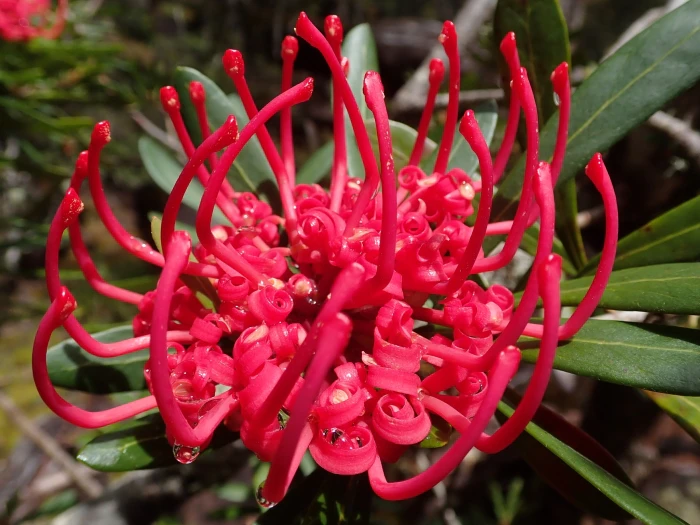Tasmanian Waratah
(Telopea truncata)
Tasmanian Waratah (Telopea truncata)
/
/

Cowirrie
Public Domain
Image By:
Cowirrie
Recorded By:
Copyright:
Public Domain
Copyright Notice:
Photo by: Cowirrie | License Type: Public Domain | License URL: http://creativecommons.org/publicdomain/zero/1.0/ | Rights Holder: Cowirrie | Publisher: iNaturalist | Date Created: 2020-12-19T13:07:56-08:00 |



































Estimated Native Range
Climate Requirements for West Des Moines, Iowa
| This Plant | Your Site | Plant Suitability for Your Location | ||
|---|---|---|---|---|
| • Precipitation | 24" - 113" | 34" | Your precipitation may be insufficient for this plant. Irrigate N" / year. | Irrigate N" / year |
| • High Temp. | 59°F - 79°F | 87°F | Your summers may be too hot for this plant. | Too hot |
| • Low Temp. | 27°F - 47°F | 11°F | Your winter temperatures may be too cold for this plant | Too cold |
This plant should grow well at your location with about N inches per year (Y minutes per month) of irrigation.
Summary
Telopea truncata, commonly known as Tasmanian Waratah, is an evergreen shrub native to the cool temperate rainforests, subalpine regions, and wet sclerophyll forests of Tasmania. It typically grows to a height of 6-8 feet (1.8-2.4 meters) and a width of 2-3 feet (0.6-0.9 meters). The plant is characterized by its striking red inflorescences, which appear in the spring and are highly attractive to birds and pollinators. The flowers are followed by curved, leathery to woody follicles that hang downwards on woody stalks. These seed pods are oblong and add to the plant’s ornamental value.
The Tasmanian Waratah is valued for its spectacular red flowers and ability to attract wildlife. It is used in gardens for its ornamental flowers and as a feature plant in borders or as a specimen. It requires a cool climate with ample water and well-drained soil to thrive. While it prefers full sun, it can tolerate partial shade, which may delay flowering by a few weeks. In cultivation, it has been successful in regions like England with similar cool climates. Pruning after flowering can encourage the growth of leaves and branches. The species can be propagated by seed, but care must be taken to prevent damping off in seedlings.CC BY-SA 4.0
The Tasmanian Waratah is valued for its spectacular red flowers and ability to attract wildlife. It is used in gardens for its ornamental flowers and as a feature plant in borders or as a specimen. It requires a cool climate with ample water and well-drained soil to thrive. While it prefers full sun, it can tolerate partial shade, which may delay flowering by a few weeks. In cultivation, it has been successful in regions like England with similar cool climates. Pruning after flowering can encourage the growth of leaves and branches. The species can be propagated by seed, but care must be taken to prevent damping off in seedlings.CC BY-SA 4.0
Plant Description
- Plant Type: Shrub
- Height: 6-8 feet
- Width: 2-3 feet
- Growth Rate: Moderate
- Flower Color: Red
- Flowering Season: Spring
- Leaf Retention: Evergreen
Growth Requirements
- Sun: Full Sun
- Water: High
- Drainage: Fast
Common Uses
Bird Garden, Border Plant, Butterfly Garden, Showy Flowers
Natural Habitat
Cool temperate rainforests, subalpine regions, and wet sclerophyll forests of Tasmania
Other Names
Common Names:
Scientific Names: Telopea truncata, Embothrium truncatum, Hylogyne australis, Hylogyne truncata, Telopea tasmaniana, Telopea truncata f. lutea
GBIF Accepted Name: Telopea truncata (Labill.) R.Br.